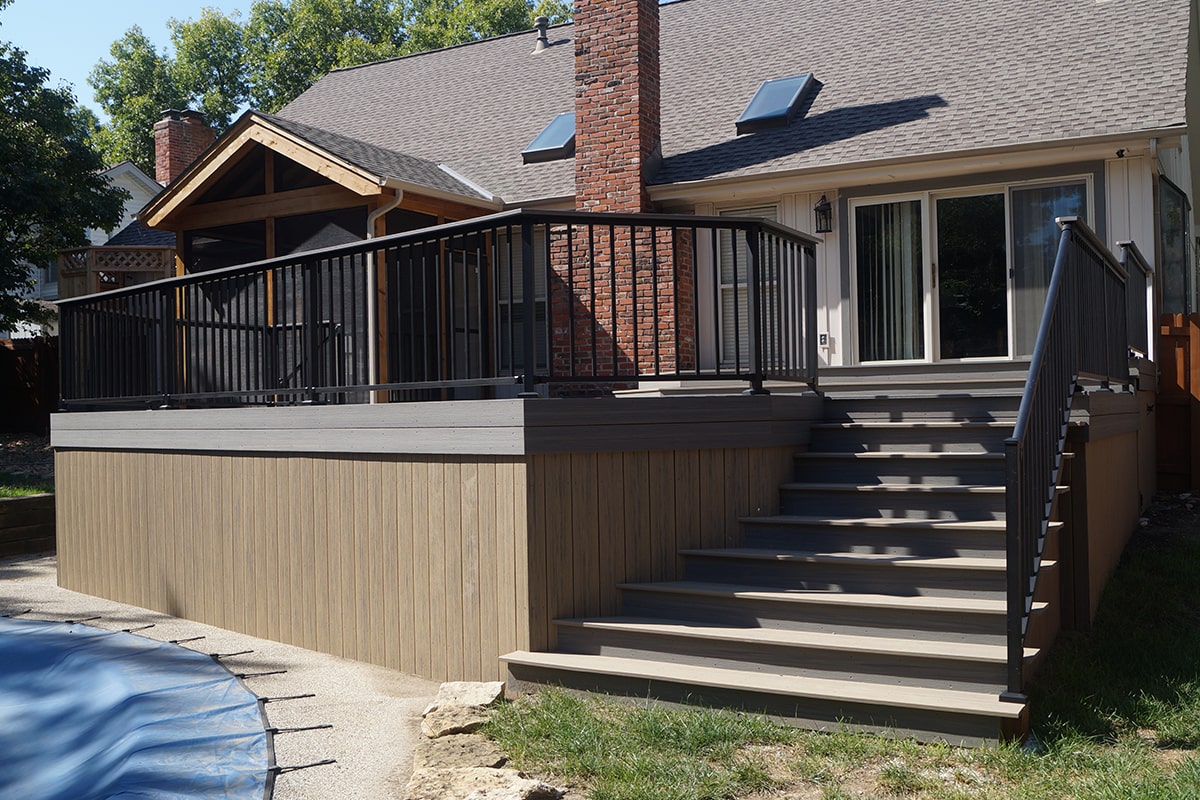Before starting any deck project, one of the first steps is checking what the city will require. The rules can differ, but most builds involve both permits and inspections for building a deck. Missing a requirement often means delays or added costs, which is why planning matters from the start.
Your location, deck height, and features such as a roof or electricity all affect the process. In this guide, we explain how the approval steps work and what inspectors look for at each visit.
Who Pulls the Permit and Calls the Inspections?
In some cities, a homeowner can pull a permit if they are doing the work themselves. In Johnson County, if a contractor is performing the work, we must be the permit holder. We are required to be licensed to pull the permit, and we are also responsible for calling in each inspection.
We manage the schedule, meet the inspector on site, and ensure the deck meets code. Our job is to help the project pass every visit and keep it moving forward.
Key Takeaway: If a contractor builds the deck in Johnson County, the contractor holds the permit and calls every inspection.
What Permits and Inspections for Building a Deck are Required?
Pier Inspection: Depth and Base Size
Many cities require a pier inspection before concrete is poured. The inspector checks the hole depth so frost heave does not push the deck up as the ground freezes and thaws. The inspector also checks the surface area at the base, often by diameter, to make sure it is code-compliant. That base size helps set how much load the deck can carry. The need for this step can vary by deck size, number of piers, and number of posts. Some cities, such as Overland Park, may not require a pier inspection for an uncovered deck.
Pro Tip: Ask the city if a pier inspection is needed for your uncovered deck. Rules can differ, even in nearby towns.
Ledger Board Inspection: Protect the House Envelope
Many cities require a ledger board inspection. The ledger is the board fastened to the house that supports the deck framing. Inspectors confirm solid attachment and proper flashing that protects the house envelope. This step reduces water entry and damage to the wall.
Framing Inspection for Low Decks
If a deck sits lower than 3 feet and the inspector cannot see under it at the final visit, the city may ask for a framing inspection before the decking goes on. This allows a clear view of joists, beams, and connections.
Final Inspection: Safety Checklist
Most other items are checked at the final inspection. Common checks include:
- Guardrail height
- Guardrail attachment
- Stair rise and run
- Landing at the base of the stairs
Need expert help with deck approvals and site visits? Contact DW Decks for a free consultation.
How Many Inspections Should You Expect?
For a simple uncovered deck, plan for as many as four inspections. These can include pier, ledger, framing when needed, and final. If you add a roof or screens, expect more. A gable roof can require a ridge tie-in inspection. Roof framing and electrical inspections may also be on the list when lights or outlets are part of the plan.
Key Takeaway: Uncovered decks often need up to four inspections. Roofed or screened decks can add roof and electrical checks.
Why We Handle Every Step with the City
We pull the permit, call the inspector, and confirm each part is ready. Our team checks pier depth, base size, ledger fastening, and final safety details ahead of each visit. This reduces repeat trips and helps you pass on the first try. We manage all permits and inspections for building a deck so you can focus on design and use.
Pro Tip: Keep the site clear and have fasteners and plans handy. Inspectors move faster when details are easy to see.
Ready to Build with Confidence?
We guide you through permits and inspections for building a deck, from first call to final approval. Our licensed team handles the paperwork and the site visits, then builds to code. Call DW Decks or request a free quote today.







